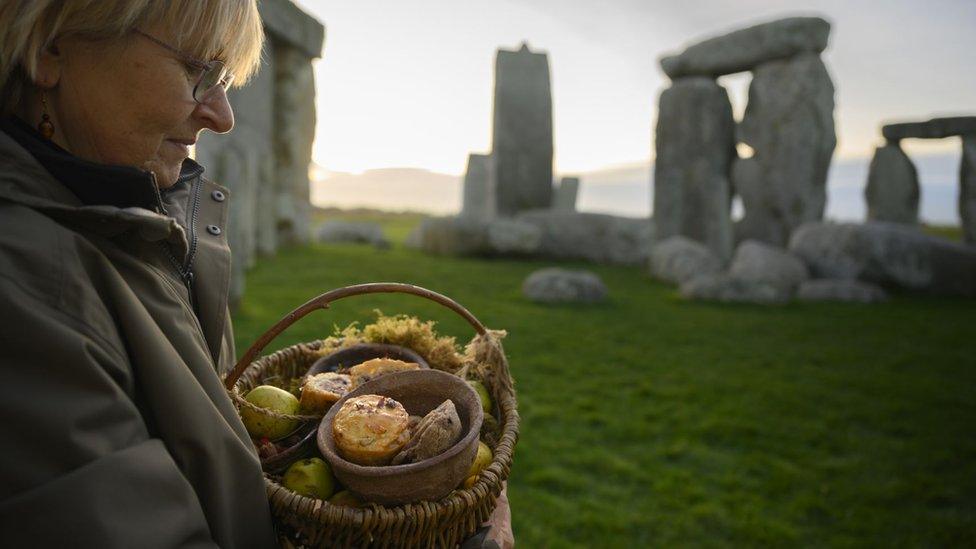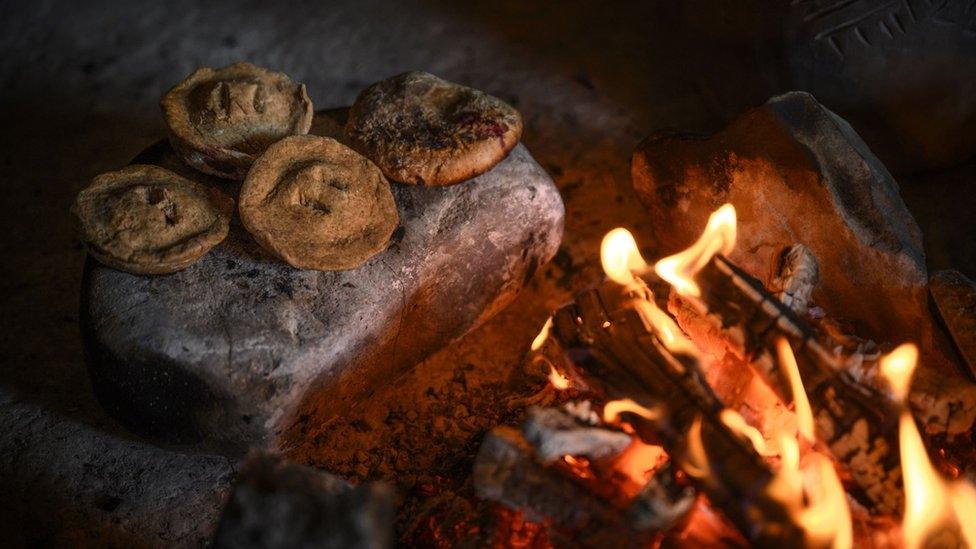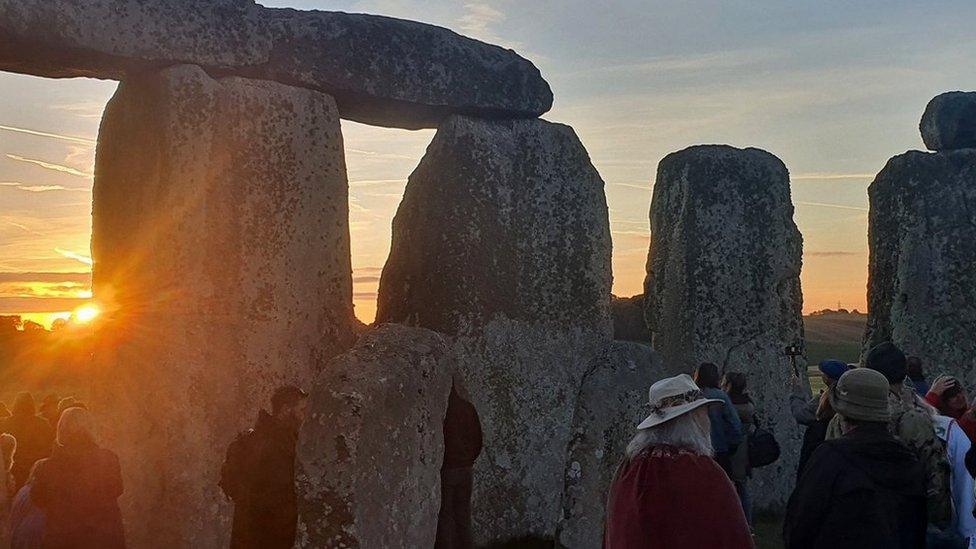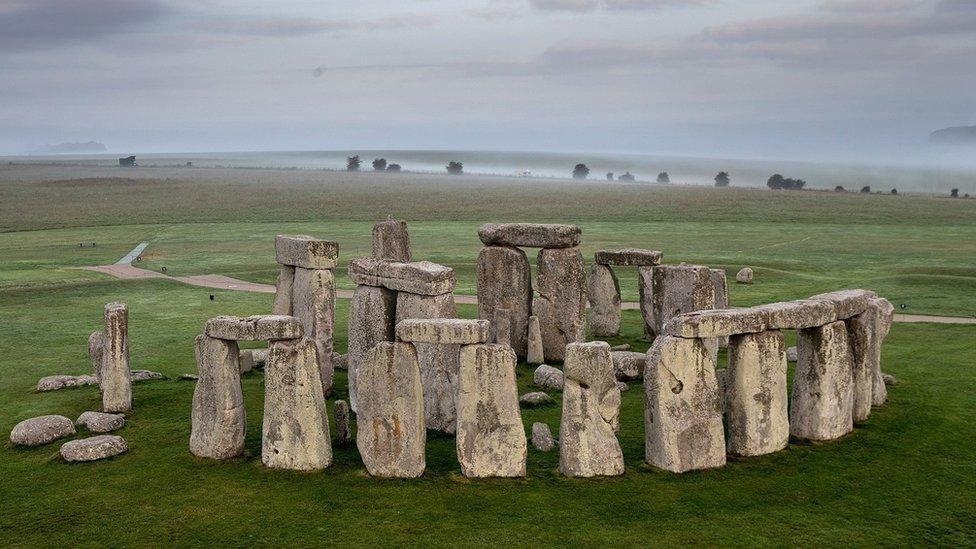Stonehenge builders had a sweet tooth, artefacts suggest
- Published

Midwinter and feasting were important to the builders of Stonehenge, English Heritage said
The builders of Stonehenge ate sweet treats including foraged fruit and nuts, English Heritage has revealed.
Previously it was thought they had consumed pork, beef and dairy.
But excavations of the Durrington Walls settlement, inhabited by the builders of the monument in about 2,500 BC, suggest they collected and cooked hazelnuts, sloes and crab apples too.
Researchers said evidence of charred plant remains suggest they might have followed recipes to preserve the food.

It is thought they cooked their ingredients to preserve them, possibly in pastry, on a flat stone
There was no direct evidence for pastry being used, but people knew how to grow cereal crops and could have made pastry from wheat, hazelnut or acorn flour, English Heritage said.
Neolithic "mince pies" could have been baked on Salisbury Plain in Wiltshire using a flat stone or ceramic pot heated in the embers of a fire, much like a Welsh cake, it added.
On Mondays throughout December volunteers will be baking festive pies, inspired by the discovery, around the hearth in the Neolithic Houses at Stonehenge.

Stonehenge volunteers will make pies throughout December inspired by Neolithic ingredients
Susan Greaney, the charity's senior properties historian, said: "We know midwinter and feasting were really important to the builders of Stonehenge.
"Thanks to the Stonehenge Riverside Project, we're lucky to have evidence which tells us they had access to nutritious fruit and nuts, and they may even have made and cooked recipes.
"Adding meat fats to hazelnuts and fruit would have made a great energy bar, full of calories.
"Such foods might have been eaten for celebration as well as sustenance, with the sharing of food helping the community to bond, encouraging people to travel from far and wide to help build Stonehenge.
"We'll never know for certain what recipes they favoured, but it's fun to imagine travellers being greeted with a tray of mince pies."
Related topics
- Published23 September 2021

- Published30 July 2021
